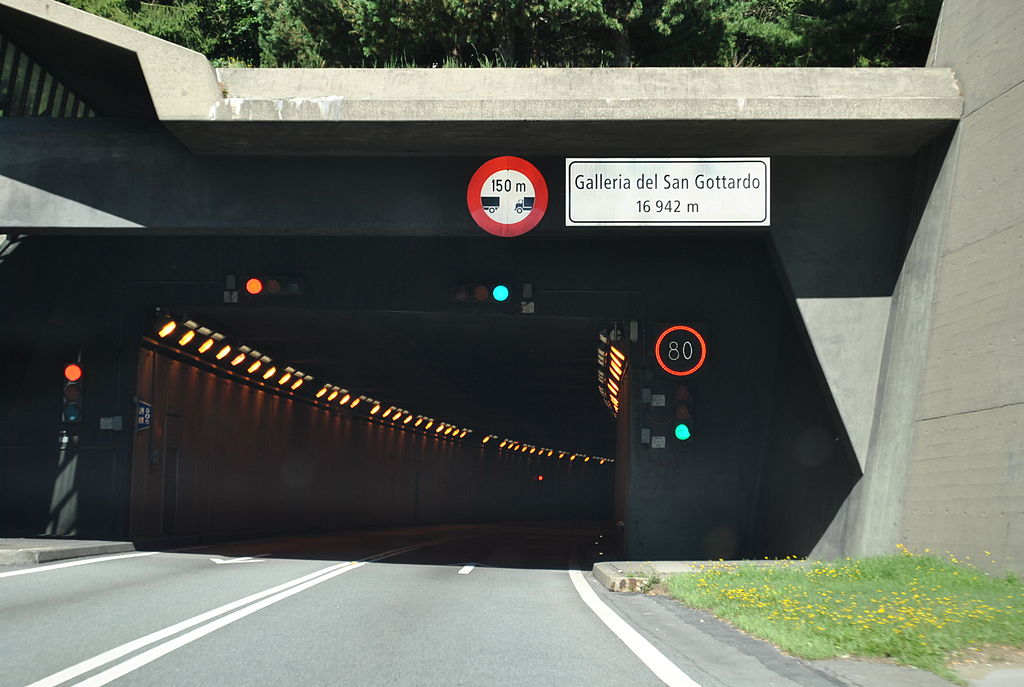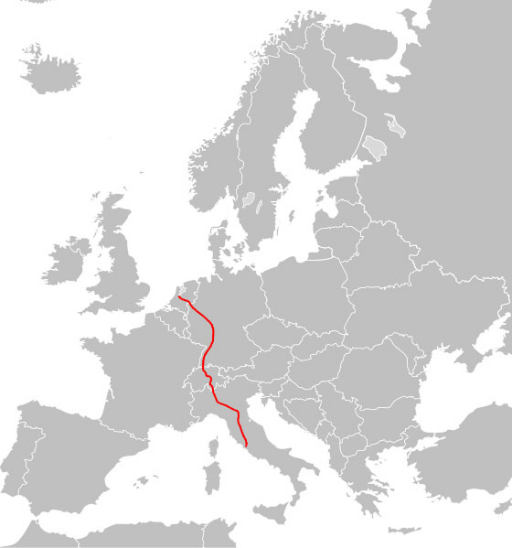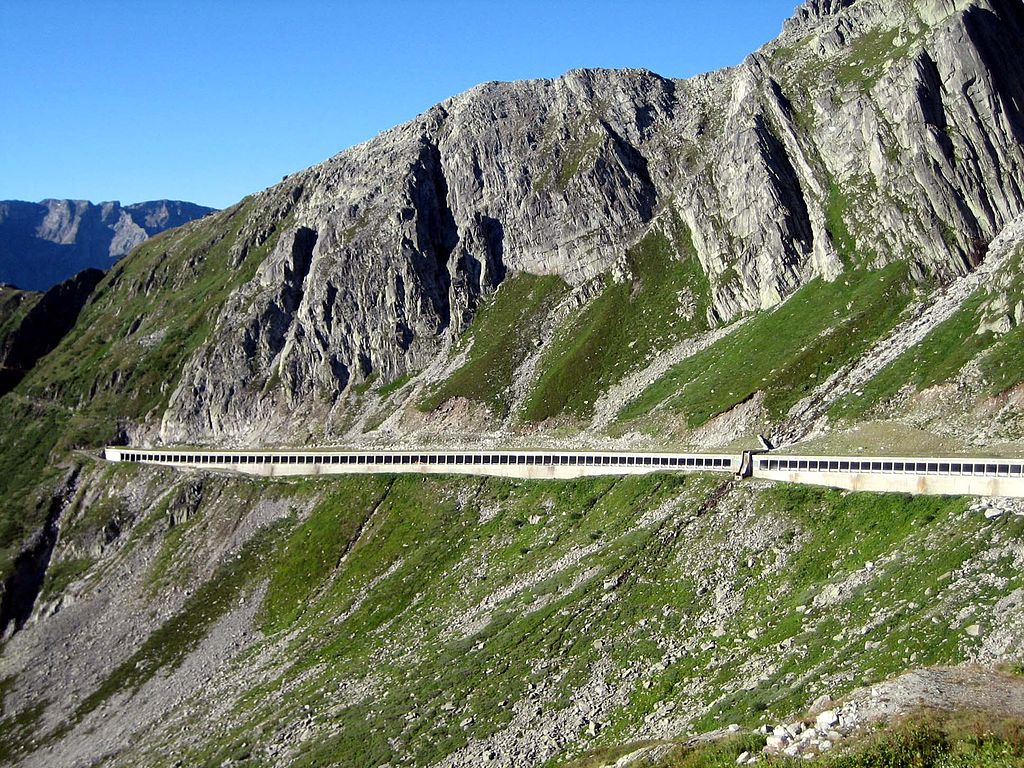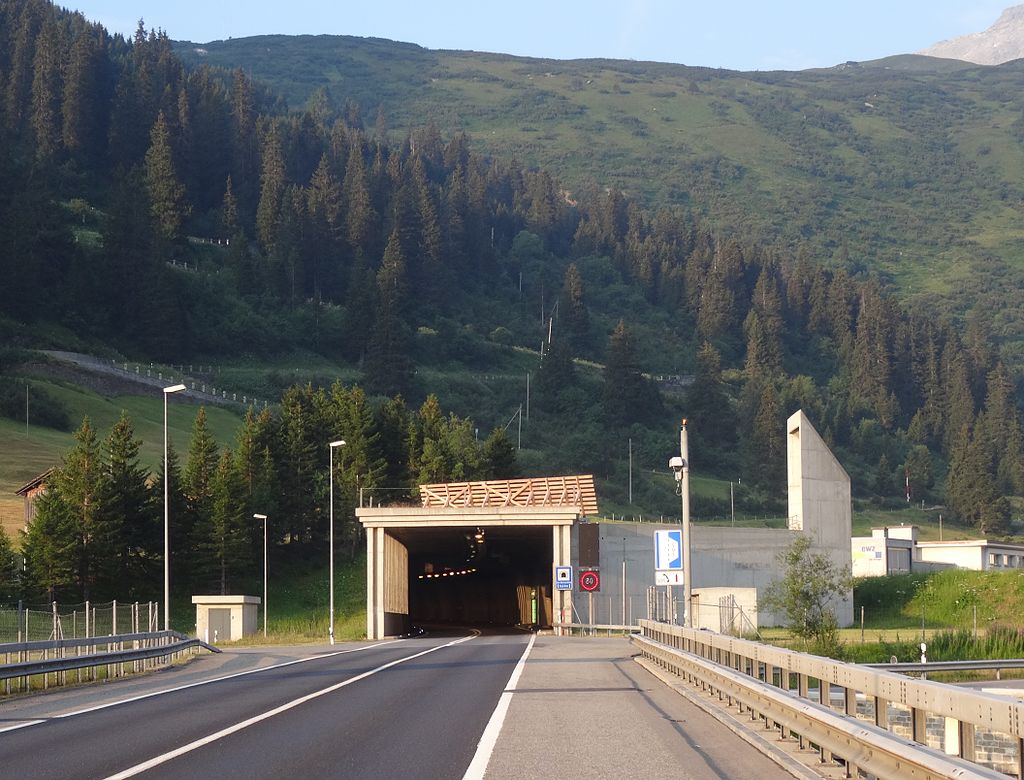St. Gotthard North-South Axis
Traffic jams with long waits are occurring more and more often, especially at the two portals of the Gotthard freeway tunnel. It often happens because in most cases, vacations and long weekends do not only begin or end in Switzerland but also in Germany and the Netherlands leading many tourists to spend these free days in the southern areas by taking this route.

The St. Gotthard highway tunnel is an important Swiss connection located between the villages of Göschenen (canton of Uri) and Airolo (canton of Ticino) and was opened on September 5, 1980. At 16.942 kilometers, it was the longest road tunnel in the world at the time of its opening, a record later surpassed in 2000 by the 24.51-kilometer-long Lærdal tunnel in Norway which will in turn have to leave its record to the Rogfast tunnel, also in Norway and still under construction, which will be 27 kilometers long with a depth of about 392 meters below sea level whose inauguration is scheduled for 2026.
In a referendum on February 28, 2016, 57 percent of the Swiss people voted in favor of a second road tunnel. Thus, the construction of the second Gotthard tube is a mandate given by the Swiss electorate to the Federal Roads Office FEDRO.
Construction of the second tube is currently underway and is scheduled to open, in 2029, which will be followed by the closure and subsequent rehabilitation of the “old tunnel” currently in use. From 2032 it is planned to use both tunnels with one lane per direction of travel, so the traffic capacity through the Gotthard will remain unchanged but, safety will increase due to the separation of traffic flows.
Increased traffic and future strategies
In the post-pandemic period from Covid 19, several striking incidents occurred, with queues of more than 20 km and exhausting waiting times.
As many vehicles to avoid the queues on the A2 divert onto the cantonal road, local traffic also becomes difficult, creating inconvenience for local residents.
The cantonal parliament of Uri, has passed a motion calling for the introduction of a digital reservation system to cross the highway tunnel, but everyone does not like the idea as it would create more complications and inconvenience.
National Councillor Corina Gredig (Greens/ZH) called for the introduction of a toll of about 20 francs (40 francs round-trip) from which residents and businesses in the cantons of Uri and Ticino would be exempt, however: this solution would not require any constitutional changes and would be compatible with transport agreements with the EU.

A2 Basel-Chiasso Highway
The A2 highway is part of the European E35 route from Amsterdam in the Netherlands to Rome in Italy, passing through Germany and Switzerland, and is an important transit route between northern and southern Europe for travelers and freight carriers.
Work pioneering Stuttgart-Degerloch bridge awarded
On the way to climate-neutral road traffic
Lauro, a dynasty of the sea between tradition and innovation
Possible alternatives
During warmer periods, especially around vacations or bridges, there are increasingly long queues with exhausting waits of even more than 2 hours to cross the same.
The train can be a viable alternative for crossing the Gotthard, especially after the opening of the Gotthard Base Tunnel inaugurated on June 1. 2016, which connects the Swiss towns of Erstfeld (Canton Uri) and Bodio (Canton Ticino) about 57 km long (it is currently the longest and deepest rail tunnel in the world). Passenger trains are now able to travel at speeds of 200 km/h while also reducing travel time. September 1. 2020 also saw the opening of the Monte Ceneri Tunnel, which, together with the Gotthard Tunnel, reduced travel time between Zurich (Switzerland) and Milan (Italy) by 60 min.
Gotthard Base Tunnel: Up in passengers and dynamism

During the summer months it is also possible to travel over the Gotthard Pass. This is one of the most important Alpine passes, located at 2108 m. situated between the towns of Andermatt (Uri) to Airolo (Ticino), has gradients of up to 10 percent and is open from June to November. In Roman times the Gotthard could only be crossed on foot or with mules, and because of the impassable route, travelers chose other routes even though it was the shortest transit route. In the 13th century the Walser built the first bridge in the Schöllenen Gorge, called the devil’s bridge and the Twärrenbrücke, to cross the Reuss thus making the pass gain European importance of which references can also be found in the Annales Stradenses i.e., the guidebook for pilgrims who wanted to reach Rome or the Holy Land. This route was essentially a mule track that allowed goods to be transported only by mule until almost the beginning of the 19th century and was also called “The way of the people” as it was very convenient for people but much less so for goods. It was not until the 19th century with the construction of a proper road that this infrastructure made a significant leap forward, greatly reducing travel time.

During the busiest periods, many people decide to take the San Bernardino A13 (this road is also often mentioned by the Swiss authorities as an alternative to the A2 in case of heavy traffic or extraordinary closures due to works or accidents). The San Bernardino tunnel connects the villages of Hinterrhein and San Bernardino in the canton of Graubünden and was opened on December 1. 1967. At that time, very high traffic was not expected, so the lanes in the tunnel are rather narrow and the highway, in many two-way sections, has gradients of up to 8 percent and many very narrow hairpin bends, making it unsuitable for heavy traffic.
During the summer months it is also possible to pass through the San Bernardino Pass. This pass became of European importance beginning in the 15th century as a mule track, and in the 19th century a road for wheeled vehicles was opened, financed in part by the Kingdom of Sardinia (now Italy), eager to improve the trade route between Genoa and Piedmont to Graubünden without passing through Austria. The San Bernardino Pass, located at 2065 m has gradients of up to 12 percent and is open from May to October.





